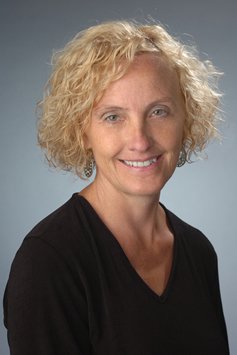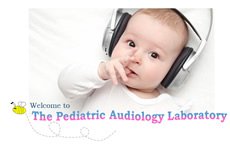Beth A. Prieve

Beth A. Prieve
Professor
CONTACT
Communication Sciences and Disorders
1200 621 Skytop
Email: baprieve@syr.edu
Office: 315.443.9614
Degrees
- University of Minnesota, B.S., Speech and Hearing Sciences, 1981
- University of Minnesota, M.A., Audiology, 1983
- University of Iowa, Ph.D., Speech and Hearing Sciences, 1989
Social/Academic Links
Courses Taught
- CSD 658 Auditory Anatomy and Physiology
- CSD 661 Advanced Clinical Audiology I
- CSD 662 Pediatric Audiology
- CSD 671 Advanced Clinical Audiology II
Professor Prieve explores basic physiological and behavioral processes of the auditory system and applies them to in humans to improve diagnosis of hearing loss. Her specialties areas include otoacoustic emissions, middle ear measures, auditory brainstem responses and the application of these in infants and children as well as newborn hearing screening. Her research has been funded by the National Institude of Deafness and other Communication Disorders, the March of Dimes Birth Defects Foundation, the Deafness Research Foundation and the American Speech-Language-Hearing Association Foundation.
Research Spotlight

The Pediatric Audiology Laboratory at Syracuse University was founded in 1990 by Dr. Beth Prieve, who remains the director and lead researcher of the team. The lab focuses on identification of hearing loss in infants and children (birth to 5 years) with a particular emphasis on linking underlying auditory physiological processes to hearing impairment. Research over the past 25 years has involved tying behavioral responses to physiological/objective measures, and has generated publications in auditory brainstem responses, otoacoustic emissions, tympanometry, and wideband reflectance.
Peer-reviewed
Prieve, B., Vander Werff, K., Preston J., and Georgantas, L. (2013). Identification of conductive hearing loss in young infants using tympanometry and wideband reflectance. Ear and Hearing, 34, 168-178.
Berg, A., Prieve, B., Serpanos, Y and Wheaton, M. (2011). Hearing screening in a well-baby nursery: Profile of failed auditory brainstem response/passed otoacoustic emissions. Pediatrics. 127(2):269-75.
Vander Werff, K., Prieve, B.A. and Georgantas, L. (2009). Infant air- and bone-conduction tone burst auditory brainstem responses for classification of hearing loss and the relationship to behavioral thresholds. Ear and Hearing,30,350-368.
Prieve, B.A., Hancur-Bucco, C., and Preston, J. (2009). Transient-evoked otoacoustic emissions in the first month of life: Frequency changes and debris. Ear and Hearing,30,330-339.
Prieve, B.A., Calandruccio, L., Fitzgerald, T., Georgantas, L. and Mazevski, A. (2008). Changes in transient-evoked otoacoustic emission levels with negative tympanometric peak pressure in infants and toddlers. Ear and Hearing, 29, 533-542.
Vander Werff, K, R., Prieve, B.A. and Georgantas, L. (2007). Test-retest reliability of wideband reflectance measure in infants under screening and diagnostic conditions. Ear and Hearing, 28, 669-681.
Calandruccio, L, Fitzgerald, T., and Prieve, B. (2006). Normative multifrequency tympanometry in infants and toddlers. Journal of the American Academy of Audiology, 17, 470-480.
Prieve, B. and Stevens, F. (2000). The New York State Universal Newborn Hearing Screening Demonstration Project: Introduction and Overview. Ear and Hearing, 21, 85-91.
Prieve, B., Dalzell, L., Berg, A., Bradley, M., Cacace, A., Campbell, D., DeCristofaro, J., Gravel, J., Greenberg, E., Gross, S., Orlando, M., Pinhiero, J., Regan, J., Spivak, L. and Stevens, F. (2000). The New York State Universal Newborn Hearing Screening Demonstration Project: Outpatient Outcome Measures. Ear and Hearing, 21, 104-117.
Prieve, B.A., Fitzgerald, T.S. and Schulte, L.E. (1997). Basic characteristics of COAEs in infants and children. Journal of the Acoustical Society of America, 102, 2860-2870.
Prieve, B.A., Fitzgerald, T.S., Schulte, L.E. and Kemp, D.T. (1997). Basic characteristics of DPOAEs in infants and children. Journal of the Acoustical Society of America 102, 2871-2879.
Prieve, B.A. and Falter, S.R. (1995). COAEs and SSOAEs in adults with increased age. Ear and Hearing, 16, 521-528.
Prieve, B.A., Gorga, M.P., Schmidt, A.L., Neely, S.T., Peters, J., Schulte, L. & Jesteadt, W. (1993). Analysis of transient-evoked otoacoustic emissions in normal-hearing and hearing-impaired ears. Journal of the Acoustical Society of America, 93, 3308-3319.
Prieve, B. and Dreisbach, L. (2010). Otoacoustic Emissions. Richard Seewald and Anne Marie Tharpe (Eds) The Comprehensive Handbook of Pediatric Audiology. Plural Publishing.
Prieve, B. and Fitzgerald, T.(2009). Otoacoustic Emissions. In J. Katz and R. Burkhardt, L. Medwetzky and L. Hood (Ed) Handbook of Clinical Audiology. Sixth Edition. Williams and Wilkins.
Prieve, B. (2007). Otoacoustic Emissions in Neonatal Hearing Screening. In M. Robinette and T. Glattke (Eds). Otoacoustic Emissions: Clinical Applications (3rd Edition). Thieme.
